
According to the latest USDA Crop Progress report, out Monday afternoon, the 2018 corn crop is all but planted, out of the ground and in good condition to start the season. Other key Midwestern row crops made measurable progress this past week, too.
“This week’s Crop Progress report had some twists and turns in it, though overall crops remain in very good condition,” notes Bryce Knorr, Farm Futures senior grain market analyst. “The boom-or-bust nature of last week’s rains was best seen in Illinois. A dry area from the western part of the state was missed by rains, while some parts in eastern Illinois received up to nine inches. Yield both dropped in the state for soybeans and winter wheat and were steady for corn.”
The corn crop has reached 98% emergence as of June 17 – up from 94% a week ago, and in line with last year’s pace and the five-year average, both at 97%. Pennsylvania (83%) and Michigan (87%) are the current outliers, with all other major production states at 96% or greater.
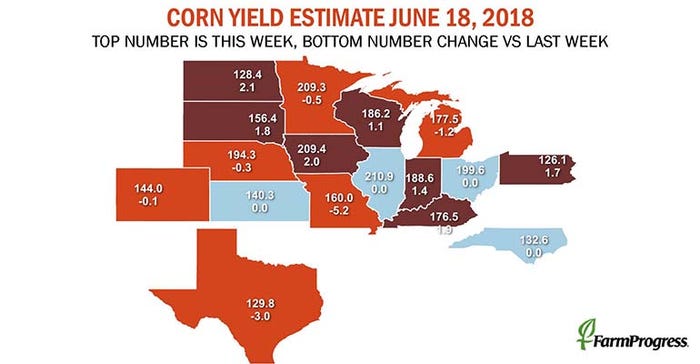
Corn condition has started strong and still managed to gain an additional foothold this past week, moving from 77% of the crop rated good-to-excellent the prior week to 78%. Ahead of the report, analysts actually expected USDA to slightly lower that rating to 76%.
Another 18% of the crop is rated fair (down from 19% the prior week), with the remaining 4% rated poor to very poor (unchanged).
“Corn ratings remain near the best levels ever for mid-June,” Knorr says. “Reliability of the ratings is also improving and should get better as pollination arrives. While the I-70 states saw steady to lower ratings, overall yield potential for the crop gained more than a half bushel per acre to an average of 184.4 if the ratings last through the growing reason. Statistically at least, yields could still range from 169 to 194 bpa, so the bottom end of the yield range is starting to disappear, though that could change if ratings decline.”
This year’s soybean planting pace nears the finish line, reaching 97% – slightly ahead of last year’s pace of 95% and moderately ahead of the five-year average of 91%. Of that, 90% of the crop is emerged, which logically is also ahead of the pace from last year (87%) and the five-year-average (81%).
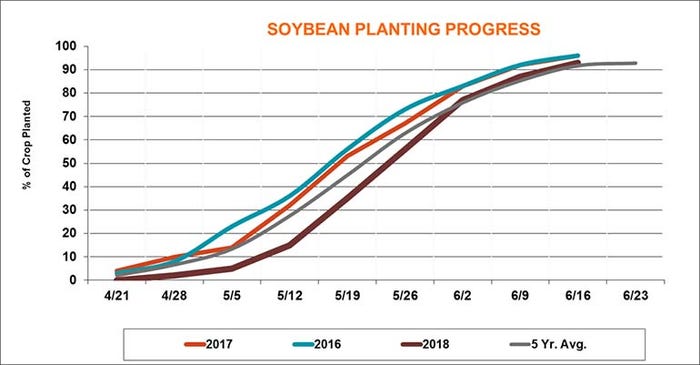
Unlike corn condition, the soybean crop’s condition degraded slightly – moving from 74% rated good to excellent the prior week down to 73%. That’s still moderately better than this time last year, when 67% of the crop was rated in similar condition. Another 22% of the crop was rated fair, with the remaining 5% rated poor or very poor.
“Soybeans nationally lost a little bit yield-wise, but overall conditions remain strong, pointing to potential yields between 51.74 and 52.8 bushels per acre according to our models,” Knorr says. “Strong early ratings don’t always last, of course, and there’s enough statistical error this at this point in the growing region that yields could still come in quite low if weather threatens later.”
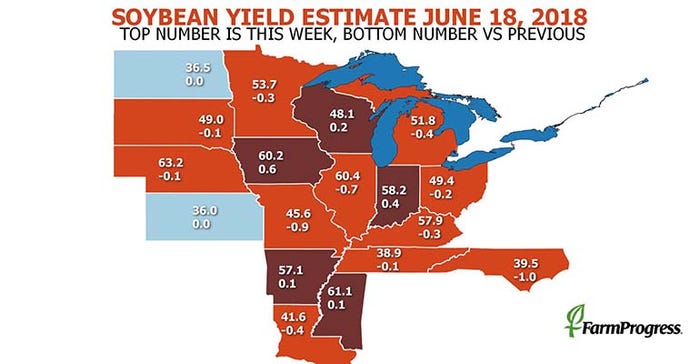
The 2017/18 winter wheat crop toes the finish line, with 95% of the crop now headed (in line with the five-year average), and with 27% of the crop now harvested (versus a five-year average of 19%). USDA slightly upgraded the crop’s current condition, from 38% good-to-excellent the week prior up to 39%. Analysts were not expecting that number to change.
For spring wheat, USDA says 97% of the crop is emerged, with 78% of the crop in good-to-excellent condition. That’s a big leap from the prior week’s tally of 70% rated good to excellent.
Knorr says the latest modeling from Farm Futures has added another 21 million bushels to the production potential of this year’s total wheat crop.
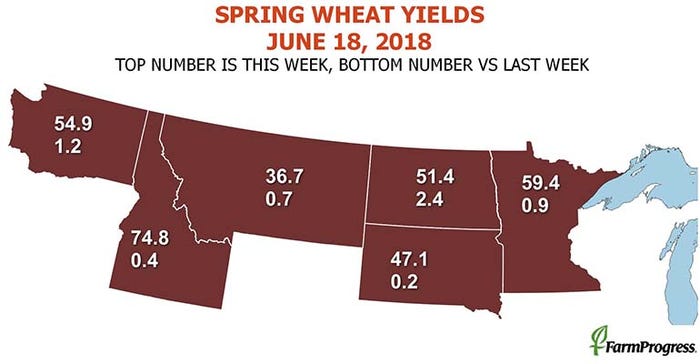
“Spring wheat gained in all the major states from the Northern Plains out to the Pacific Northwest, adding more than a bushel and a half to yield potential, paced by big gains in the leading state of North Dakota,” he says. “Results in winter wheat were more variable but still improved prospects, as USDA reported last week.”
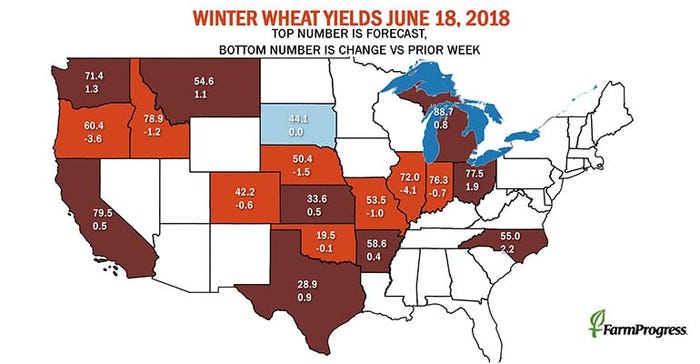
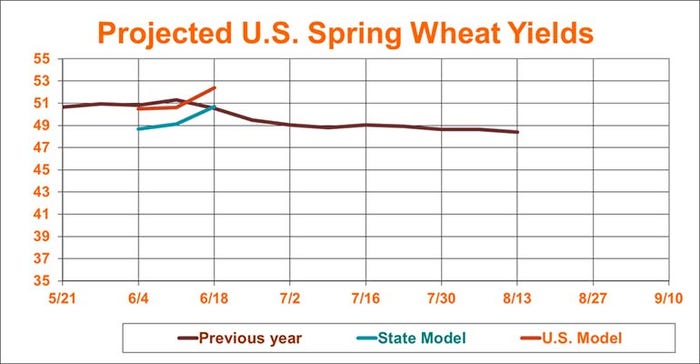
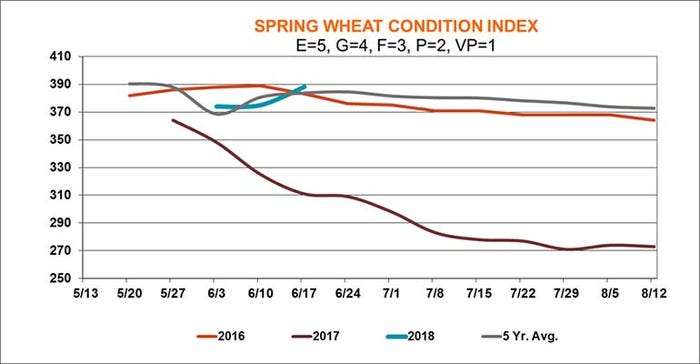
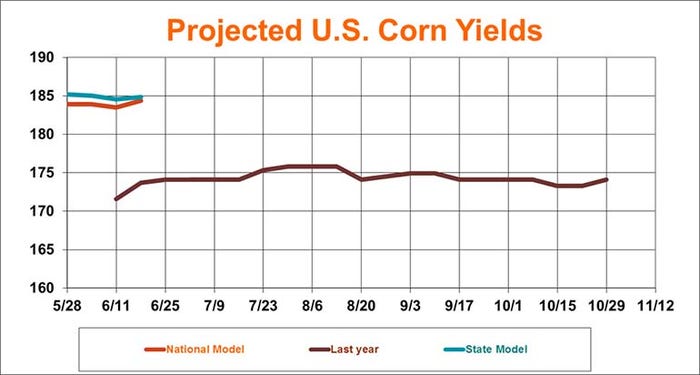
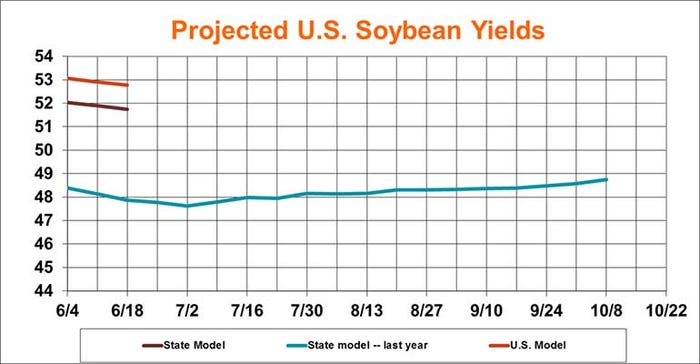

About the Author(s)
You May Also Like






